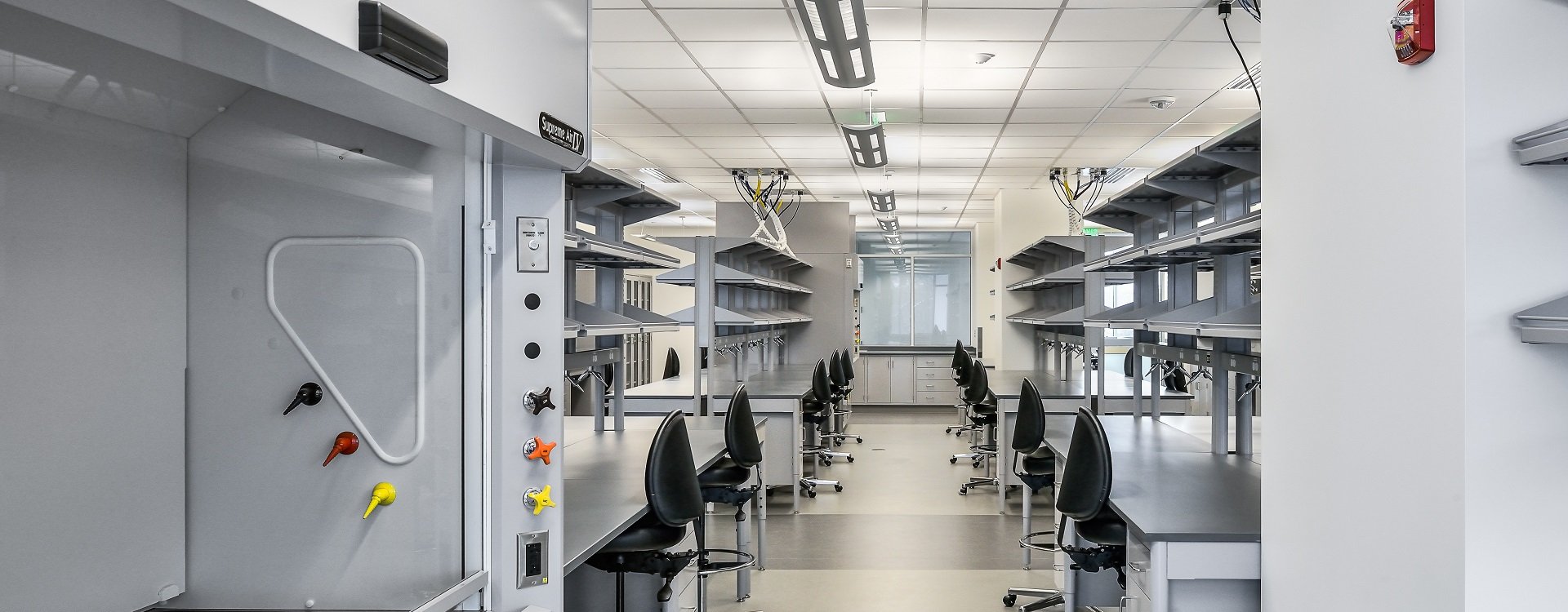Chemical Hazards to Laboratory Safety: Use or Discard It - Old Chemical Bottles
Date: 2022-01-19 Source: RUANQI Classification: Resources
Laboratories often accumulate old chemical bottles that are no longer in use and are usually toxic or dangerous. Laboratory managers can use a variety of strategies to correctly reuse or dispose of these chemicals.
Properly dispose of or reuse old laboratory chemicals
Laboratories often accumulate old chemical bottles that are no longer in use and are usually toxic or dangerous. Laboratory managers can use a variety of strategies to correctly reuse or dispose of these chemicals. These strategies are not mutually exclusive. Laboratory managers can apply for multiple to meet the requirements of maintaining laboratory safety and environmental protection. These strategies are discussed in the following sections.
Proper disposal can be expensive. Therefore, it is essential to minimize the need for proper treatment by minimizing the purchase of chemicals. Even if your laboratory is a small laboratory, centralized chemical procurement is an effective method. Assigning one person to purchase all chemicals for the entire laboratory will help ensure that different laboratory staff do not place duplicate orders. More people could be assigned to do so in larger laboratories, and departments could be established to manage chemical procurement, storage and waste disposal.
Maintain searchable Computer Chemistry Database
The first step in properly recycling or disposing of chemicals is to know what chemicals you have. It is best to maintain a list of all chemicals that are being used or stored in the laboratory. The supply room personnel shall record the receipts of all purchased chemicals. The data to be recorded include the supplier, the quantity, purity and quantity of chemicals purchased, the person who ordered the chemicals and the chemical room number delivered.
New chemicals should be added to the database at the time of purchase and old chemicals should be deleted at the time of consumption. The last requirement means that laboratory personnel, not just warehouse personnel, can access the database to update information. Laboratory personnel should record when samples are completely consumed or transferred from one laboratory to another.
When the sample becomes too old to be processed, the database can also understand the database by enabling laboratory personnel to obtain the required chemicals from who without purchasing new samples. If it is necessary to purchase fresh samples of a specific chemical, the buyer can check the chemical inventory to determine the chemical purity of the supplier and the same chemical samples previously purchased.
Several companies provide commercial chemical inventory database software. Using Internet search engines and keyword phrases such as "chemical inventory management software" can identify software suppliers and retrieve descriptions of their products.
These computer programs vary in complexity and function. The software search function may include one or more of the following search options: search by chemical name, chemical supplier, storage location, laboratory department and / or individual purchasing chemicals. The chemical name can be the appropriate IUPAC (International Union of pure and Applied Chemistry) system name or one or more common names of chemicals. Other search options include CAS (Chemical Abstracts Service) chemical number and purchase date. Some programs provide storage of MSDs information.
More complex software can print bar code labels of chemicals, which can be attached to chemical sample containers to track the movement and consumption of chemicals in the laboratory. If the supply of a chemical is recorded below a specified level, some software can automatically alert the user that the specific chemical needs to be reordered. Some chemicals may have expiration date data, beyond which the chemical should not be used. Some software provides functionality including an alarm when a specific chemical sample usage date expires.
Some software vendors (e.g. chemoinventory) provide education and other non-profit organizations with limited functional versions of their software free of charge (www.chemoinventory. Com). Other software provides more functionality, but must be paid. An example is nexxis # chemical # inventory # Manager (www.labtronics. COM / chemical_inventory # management. HTM).
Laboratory cleaning days shall be held regularly
Regular cleaning days during which old chemical samples and unused / unused equipment are collected and disposed of may be a useful way to keep the laboratory in a clean, tidy and safe operating state. If laboratory managers insist that all daily work stay on the same day and focus on cleaning, these cleaning days are the most effective to achieve these goals.
Sometimes only a single laboratory rather than the entire facility needs to be cleaned. This can happen if the laboratory is in a facility or moves from one facility to another and the facility moves from one location to another. Alternatively, laboratory clean-up days can be used to facilitate the termination of the project or relocation from one laboratory to another.
If a single laboratory, rather than the entire facility, is cleaning and handling old chemicals, have the appropriate laboratory staff inform colleagues of their lack of availability before the process begins. Interruptions greatly reduce the efficiency of the cleaning process and increase the time required for the cleaning process.
After identifying old chemical samples and selecting them for treatment, the correct procedures must be followed. The laboratory management personnel can properly pack the samples by the laboratory personnel, and the samples can be extracted and processed by a qualified chemical treatment company. Some disposal companies will do all the work themselves. This method may be more suitable for large laboratories.
Although any discarded chemicals are chemical wastes, the Environmental Protection Agency (EPA) or relevant national agencies define hazardous chemical wastes as wastes that pose a hazard to human health and / or the environment. EPA defines four key attributes for determining whether a chemical is a hazardous waste: flammability, corrosivity, reactivity and toxicity.
Potentially hazardous chemicals must be handled in accordance with federal and state regulations and procedures. For a summary of EPA regulations, see
www.epa. gov/epaoswer/osw/conserve/clusters/schools/index. htm
Although the requirements of states vary by region, the basic elements remain the same. However, it is advisable to consult the relevant state government agency or EPA to determine whether specific chemicals are defined as dangerous goods and storage and disposal requirements. These requirements shall be defined on the MSDS of the chemical. However, if the chemical was purchased not long ago, the available MSDS sheet may have expired. You should refer to the current version of MSDs.
Many laboratories use one or more large containers labeled "chemical waste" as solvents and other chemical waste. Special care must be taken to collect the chemicals in these containers because some chemicals may be incompatible. For example, the addition of a strong oxidant may cause another chemical in the container to oxidize and cause heat release and explosion or fire.
Due to the risk of chemical incompatibility and the risk of chemical leakage in busy work areas, chemical waste containers should be away from normal work areas and away from sinks and floor drains. Each addition of chemical waste to storage containers should be noted in permanent records, such as online documents or laboratory notebooks.
Do not completely fill waste containers, especially waste storage bottles. Although the amount of empty headspace at the top of the container can vary with the size of the container, it is generally preferable to allow about 20% of the empty headspace at the top of the container so that steam or liquid expansion may be formed due to heat release.
To remove chemical waste from the laboratory site, please contact a professional, licensed hazardous waste transport vehicle and transport vehicle. Trained personnel of these companies will properly package waste chemicals for transportation and disposal.
Training laboratory personnel
Training laboratory personnel in proper handling and storage procedures is essential. This is a special problem in the academic laboratory, because the students who use the laboratory are different every semester. Larger laboratories usually have health, safety and environment departments, and their personnel are qualified for such training. If your laboratory does not, a consultant will provide a training program for appropriate chemical storage and disposal.
When supervising students working in the laboratory, professors and teaching assistants should review the safety issues and required safety procedures related to each laboratory exercise or experiment.
Solvent and glassware cleaning
In laboratory equipment such as rotary evaporators and distillation units, the solvent generated as waste is usually as clean as the solvent originally from fresh solvent bottles. Do not discard these solvents; Reuse them for routine laboratory operations, such as glassware cleaning. In general, one can filter and reuse the solvent to at least initially clean the glassware. Laboratory personnel should limit the use of solvents and other chemicals in routine operations, such as cleaning laboratory glassware.
Chromium containing cleaners can be very effective, but should only be used as a last resort. Evaluate the use of enzyme or detergent based cleaners before using chromium based cleaners. Chromium based detergents are highly toxic, as Julia Roberts's film Erin Brockovich showed in a fairly accurate California pollution case, in which toxic waste containing chromium is immersed in urban water supply, which obviously leads to congenital defects in children and serious diseases in adults.
Volatile solvents commonly used for disinfection equipment, such as isopropanol, should be replaced by quaternary amine based detergent. Replace highly toxic solvents such as benzene or carbon tetrachloride with less toxic solvents as far as possible. For example, cyclohexane is commonly used as a substitute for carbon tetrachloride.
Whenever possible, mechanical cleaning methods should be used instead of solvents. These may be as simple as using a good cleaning brush or ultrasonic generator instead of solvent. Large laboratories usually use industrial dishwashers instead of solvents to clean glassware.
Maintaining an adequate supply of clean glassware will reduce the tendency to wash glassware with volatile solvents such as acetone to quickly dry glassware for reuse. Then a glassware drying oven will be used.
Neutralize aqueous acids and bases. Only pour non-toxic aqueous liquids with pH 4 to 9 into the sewer. Neutralize and clean up spills so that all or most of the waste can be properly disposed of.
Purify the used solvent by distillation. For example, scale-up laboratories and pilot plants can accumulate large amounts of used solvents. If distillation removes all active compounds and impurities, distillation can purify the solvent for reuse and reduce the volume released to the environment. After all, for these and economic reasons, production plants often extract solvents.




